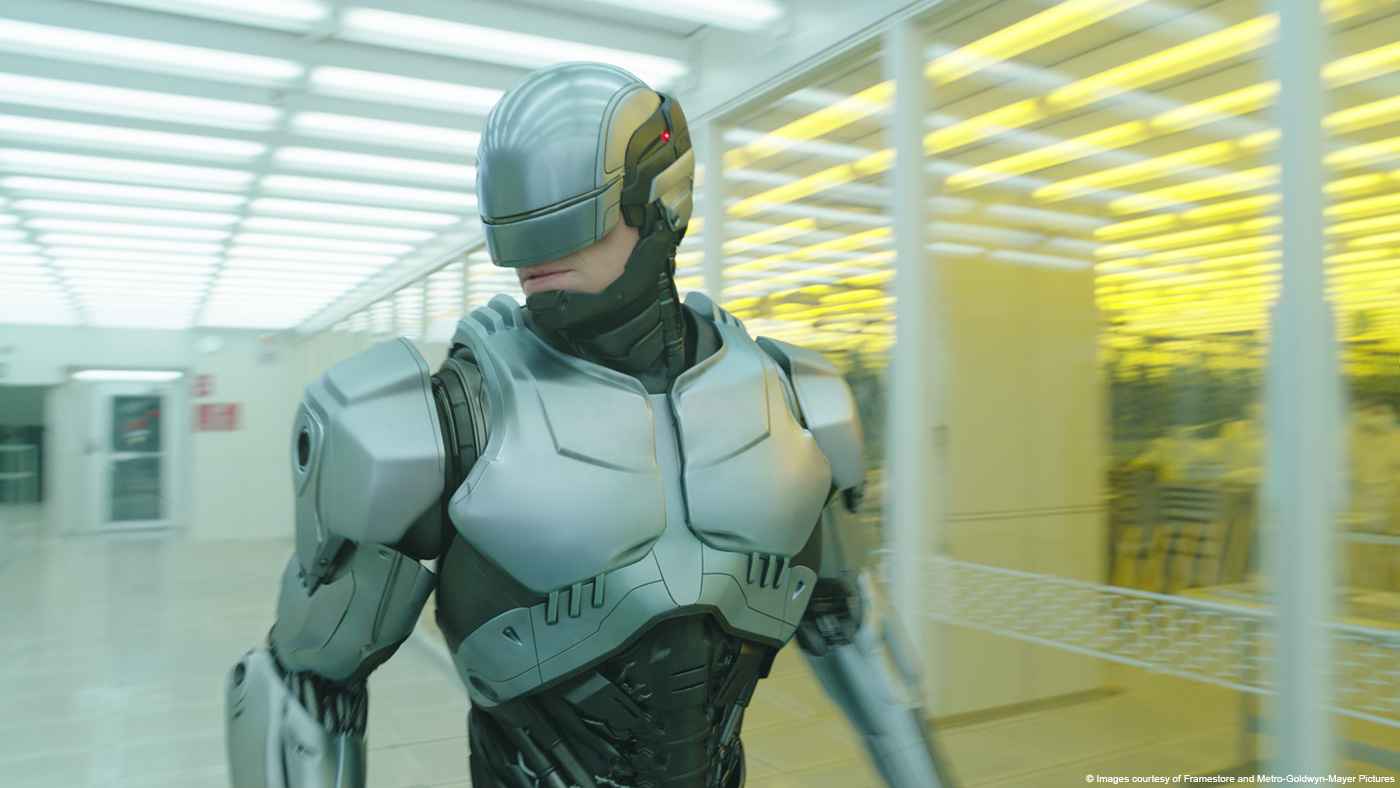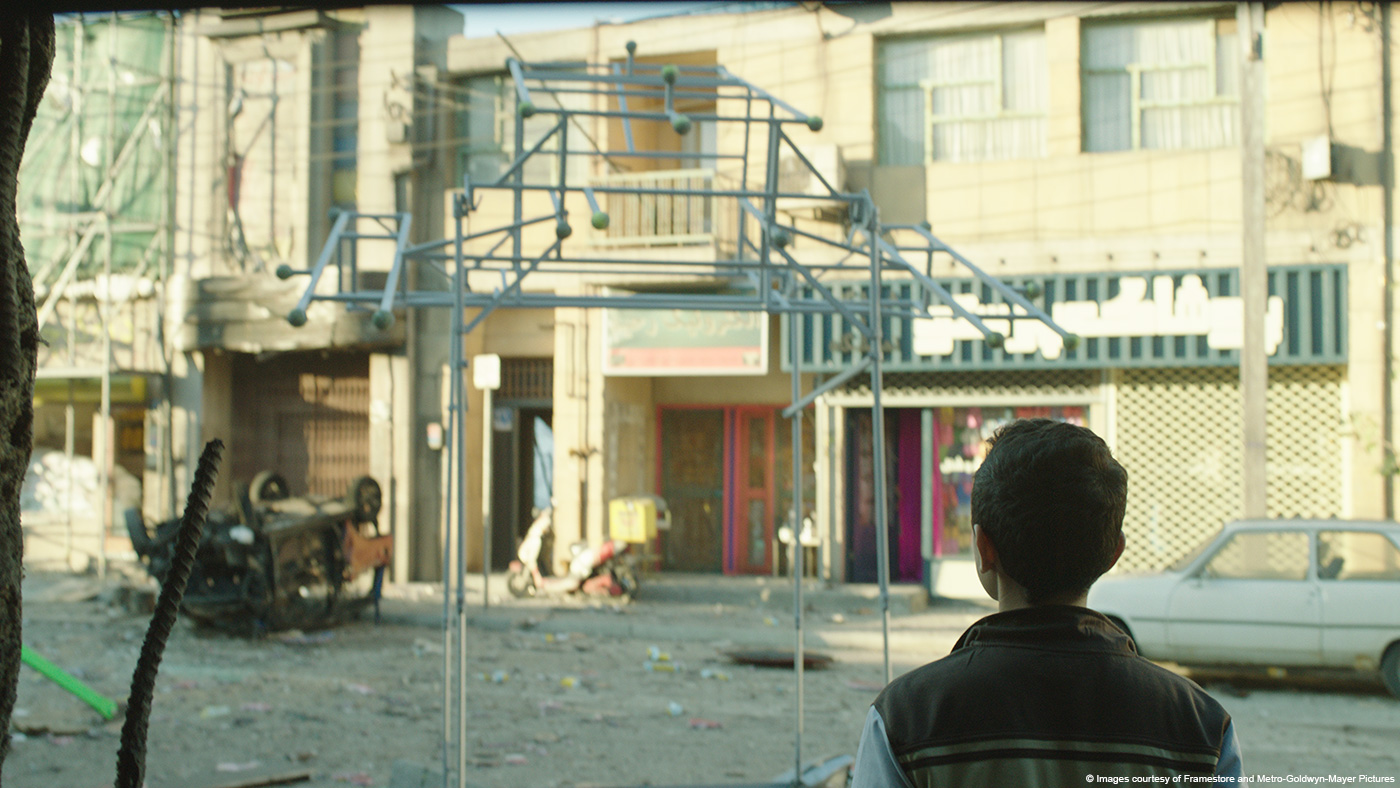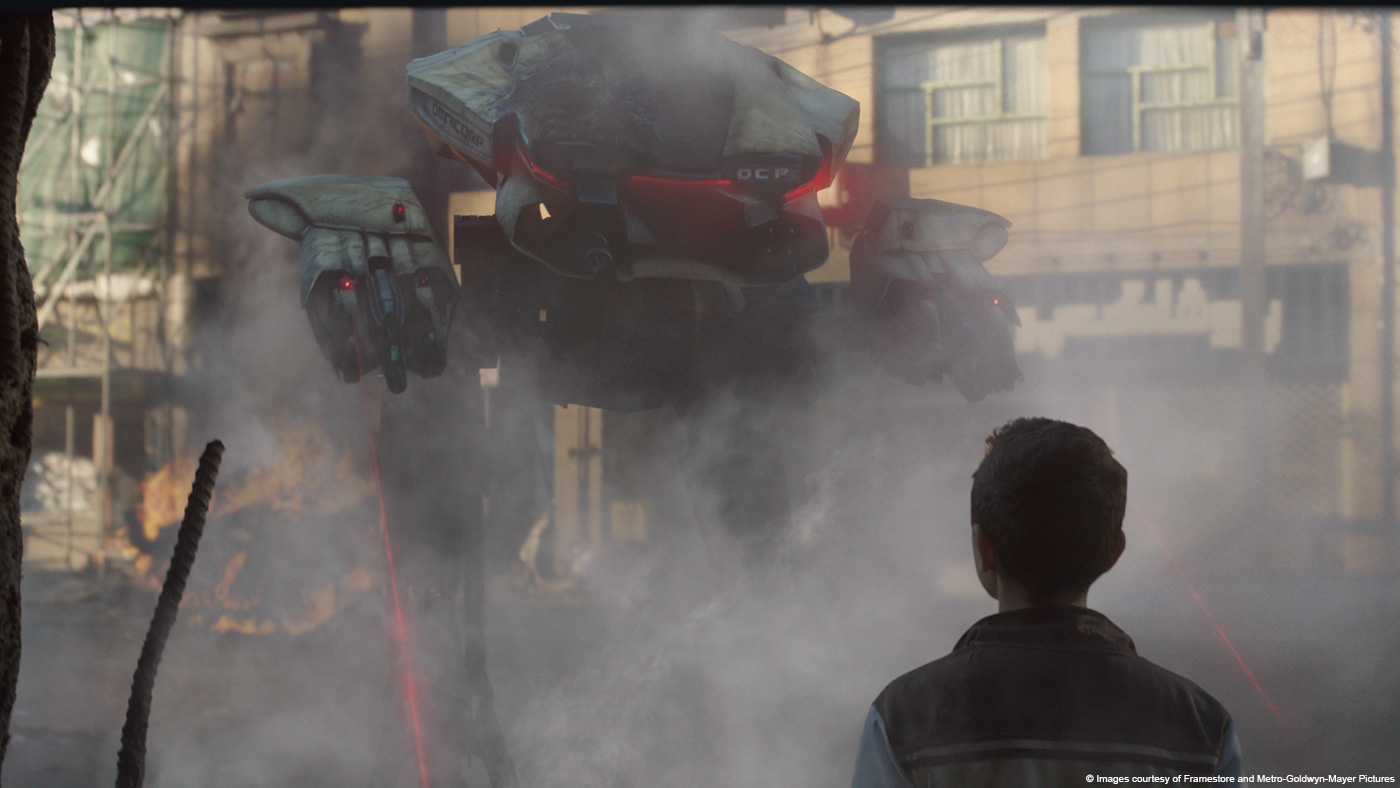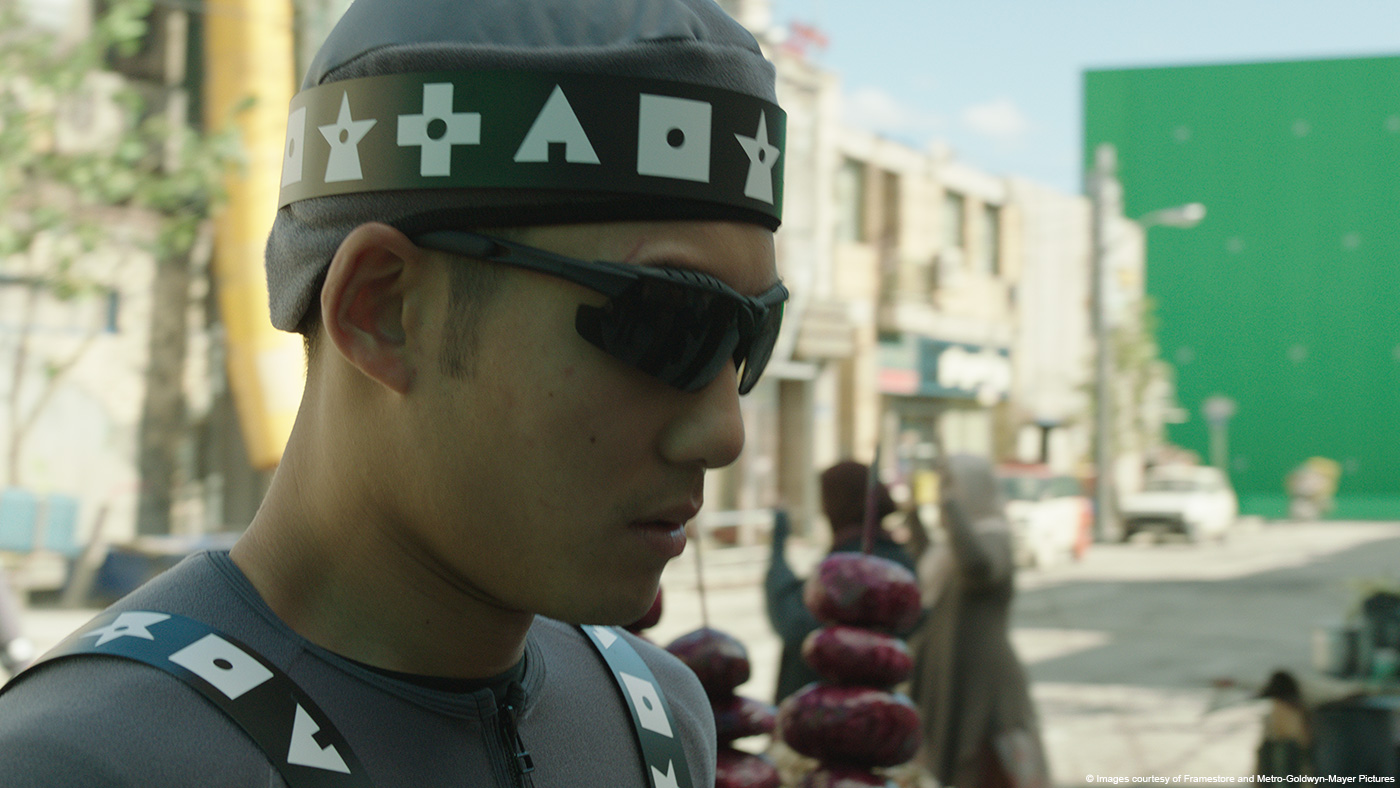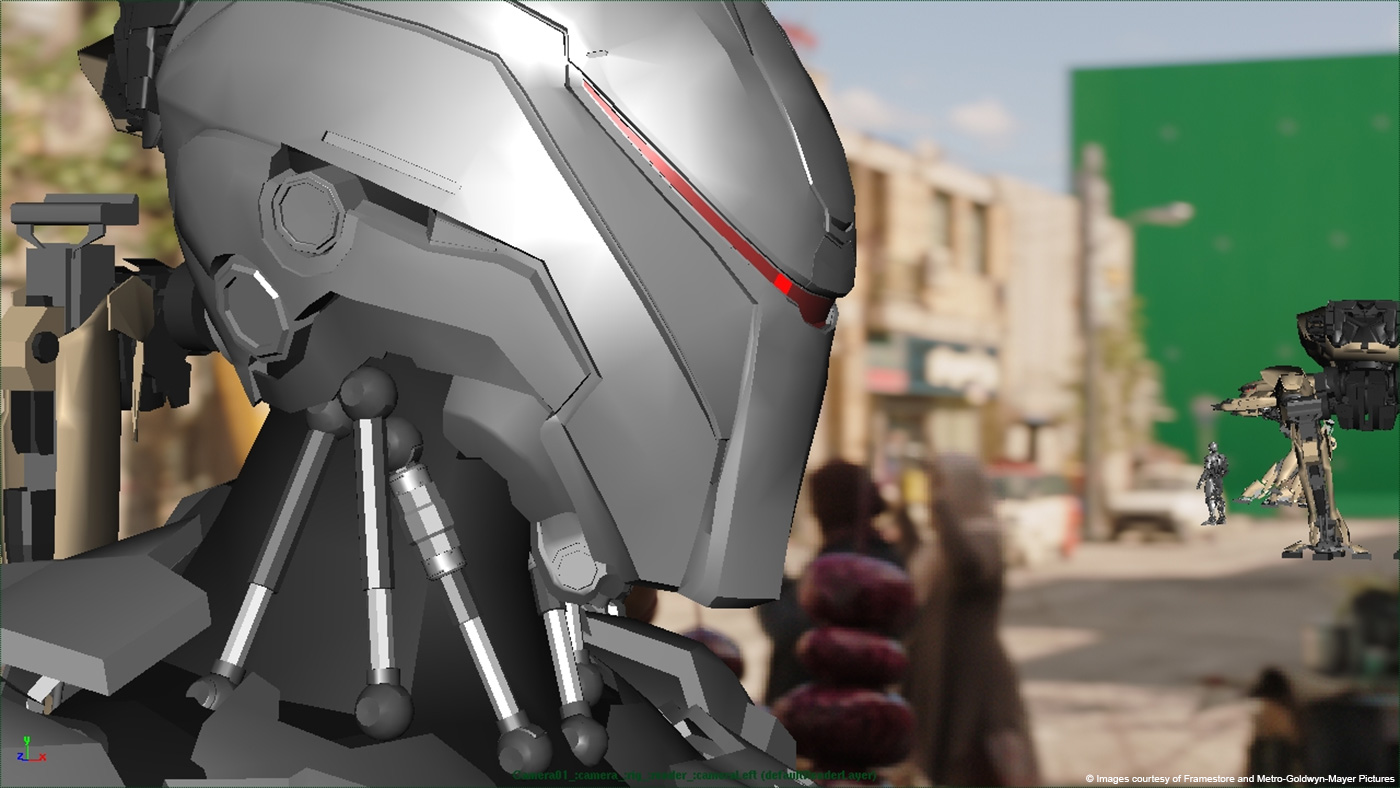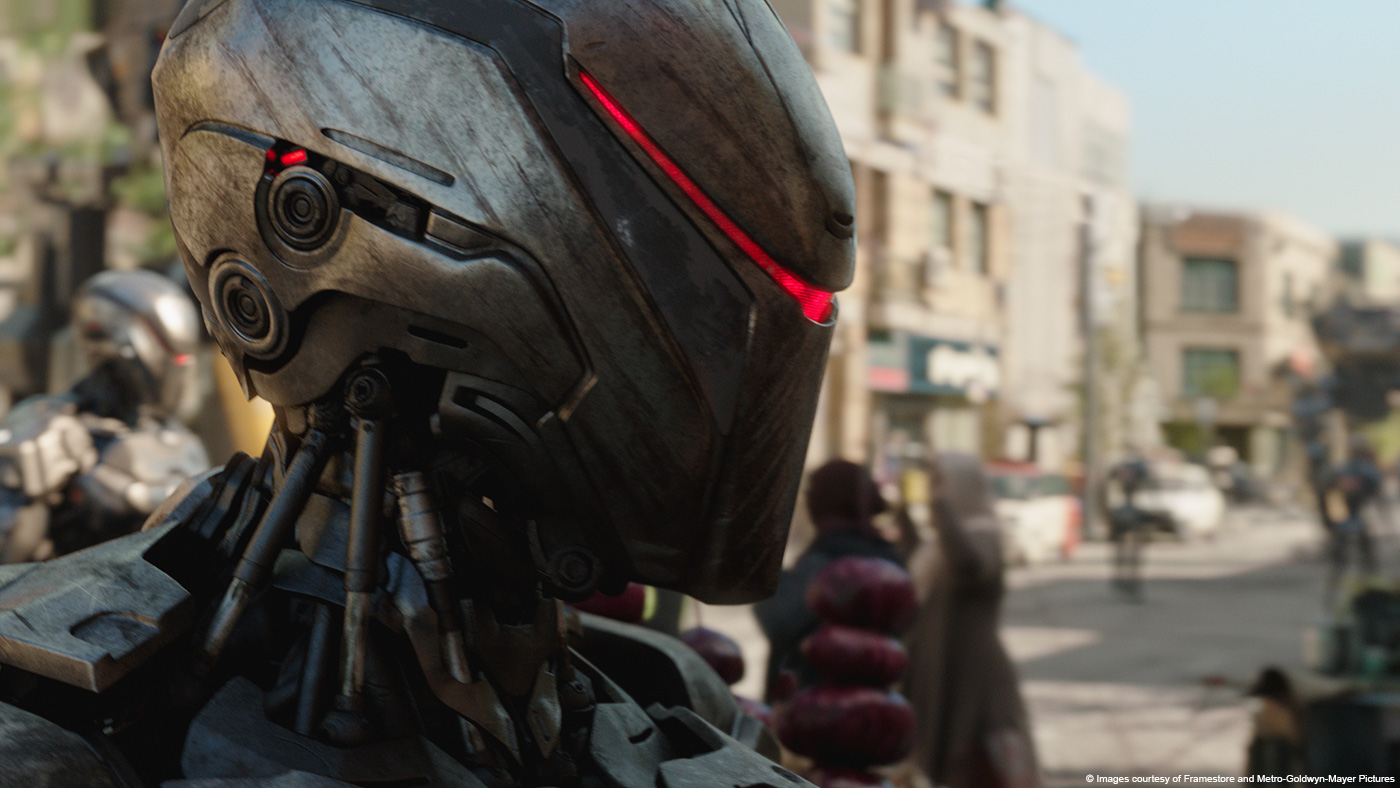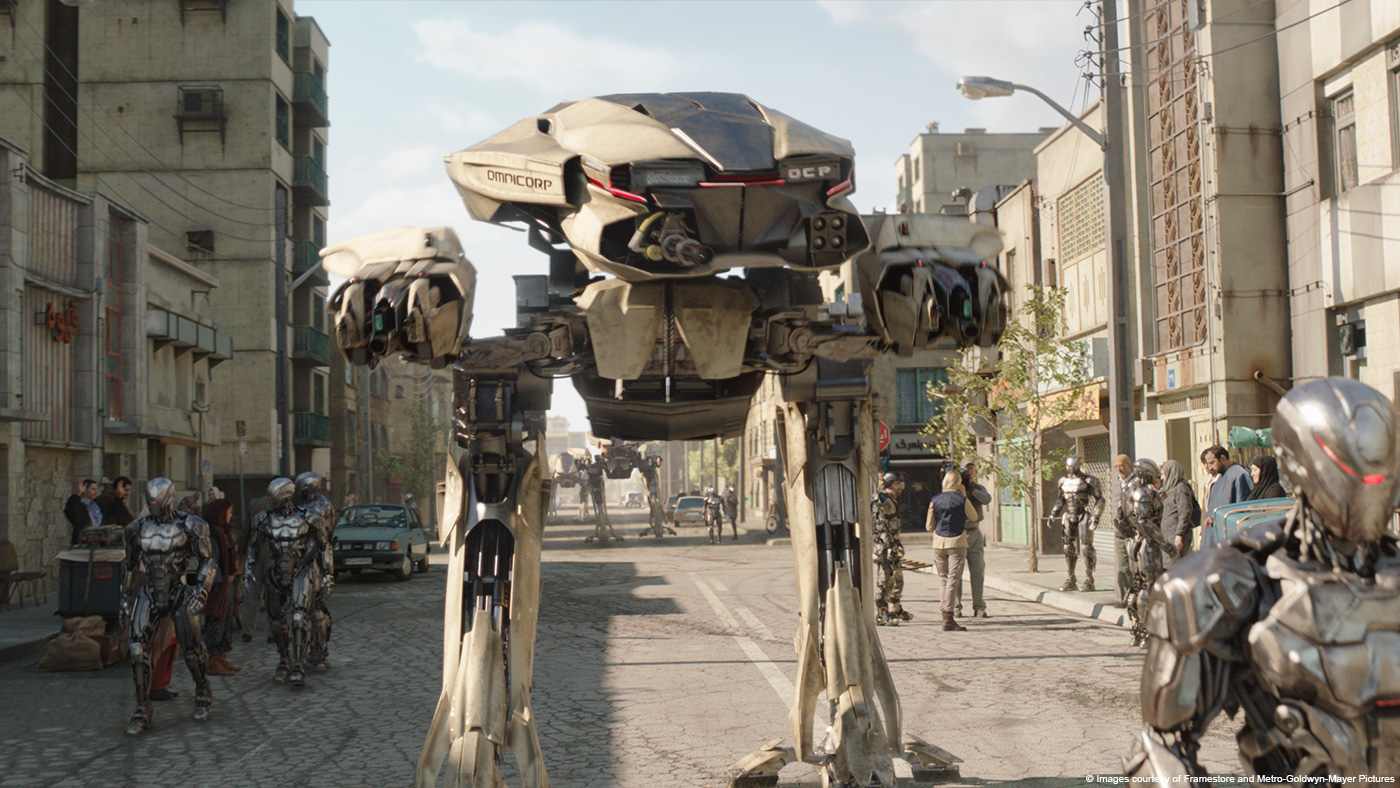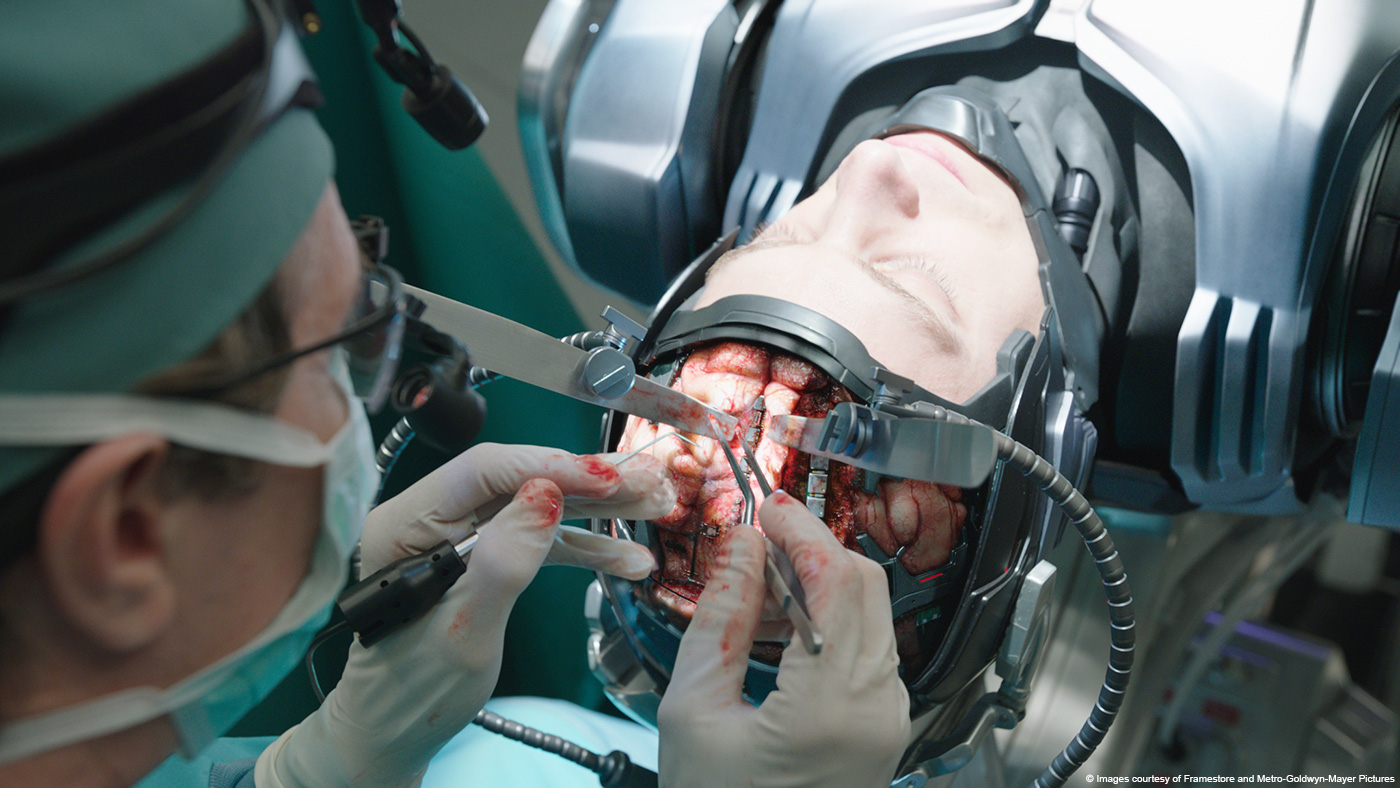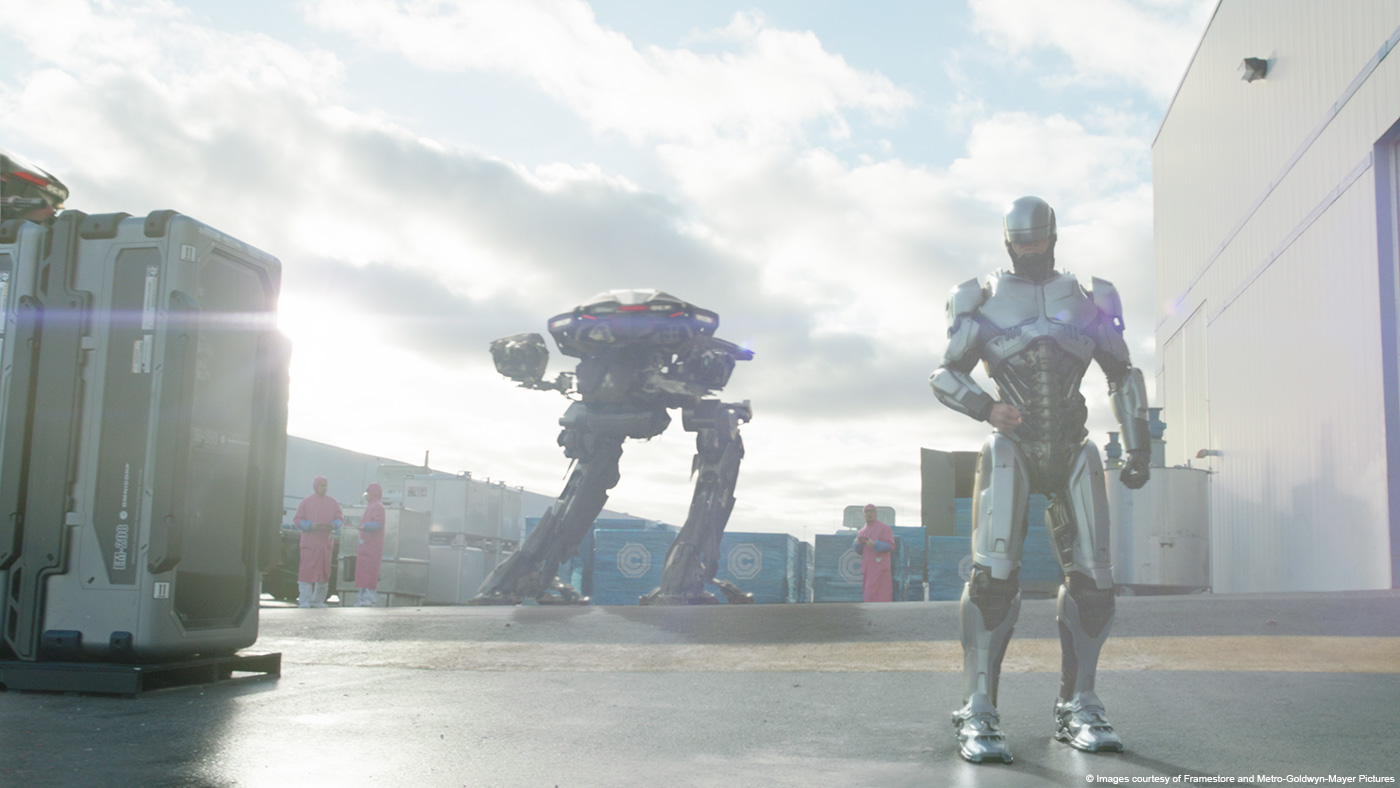After explaining the work of Framestore on JOHNNY ENGLISH REBORN, Rob Duncan oversaw the visual effects of THE DICTATOR. He is back to talk about his work on the remake of ROBOCOP.
How did Framestore get involved on this show?
We got a call out of the blue, and within a couple of days we were hired.
How was your collaboration with director José Padilha?
I wasn’t there for the whole shoot.
I think we got to know each other better in post production, when he was back in Brazil and I was in London.
What was his approach to the visual effects?
Most directors want the VFX to be unobtrusive, to not get in the way of the story, so in that sense his requirements were very standard.
His background is in documentary films, so that meant he often shot scenes with deliberately long takes. As any professional VFX person will tell you, that makes the job harder because you cannot use sleight of hand tricks to get you out of trouble. At the same time, it challenges you to do a great job because you know there is no hiding place.
How did you work with Production VFX Supervisor James E. Price?
Jamie was a real pain in the neck – literally. He is 6ft 9in (2.06m) which meant I was always looking up to him.
Just spending a little time with him on set, I could see that we approached the work in a very similar way – this made the post-production phase much easier because I knew what was expected, and he allowed us to just get on with the work without much interference.
What was your role on this project?
To assist Jamie on the shoot where required, and then to make Framestore’s work look as good as possible in the timeframe allowed.
What are the sequences made by Framestore?
We provided many shots throughout the movie, but the main sequences were:
The opening sequence in Tehran;
Robocop in China, which included his first reveal and disassembly, his escape from the factory, the brain surgery scene, and his first trial against the EM-208;
The Final Battle at Omnicorp HQ.
Can you describe to us your typical day?
The mornings would typically be taken up with going through dailies with the London crew – usually divided into individual animation, lighting, and comp sessions.
Then after lunch I would switch over to Montreal time (the start of the Canadian day), and do the same thing over again. We have an in-house system which allows either end of the conversation to control the visual timeline, and to make annotations on the images which can be saved for later use.
After that, I would have to allow time for a call with the clients, who were in Los Angeles.
What was your feeling to redesign the iconic Robocop and ED-209?
The re-designs were already conceptually in place when we came on board. I thought they were respectful of the classic designs, yet had been brought sympathetically up to date.
Can you explain in details about the creation of Robocop suit?
Our goal was to match the material quality of the on-set practical suit where appropriate.
However, the parts of the suit which were made from rubber or other semi-flexible material had to be made to look metallic or rigid. Sometimes this could be achieved through selective grading (to tighten up highlights for instance), but mostly this was done by replacing the parts which weren’t looking their best.
The silver-grey plates also had a rather tricky faux-pearlescent paint finish that we had to mimic, which took a lot of trial and error.
How did you manage the matchmove and lighting challenges?
We broke the matchmove task into two separate challenges – the first was to track the camera which had photographed the scene and the second was to track the relevant objects (normally the Robocop suit) that needed to be manipulated in some way.
The original brief was to augment and replace only parts of the Robocop suit, leaving large parts of the original photography intact. It can be incredibly difficult and time-consuming to get a 100% accurate object track in order to achieve this, so we began to replace the suit in its entirety except for Joel’s face, which was conveniently framed within his helmet – it meant we only had to get a perfect object around the head and neck, and the rest could be a lot looser.
Can you tell us details about the creation of the new ED-209?
Again, the design of the ED-209 was already set, so our main challenge was to determine how it would move according to the demands of the script.
How did you handle the rigging and the animation?
We were very careful not to change the fundamental silhouette when the ED-209 was in its rest pose, but we knew that the machines had to be quite active to satisfy some of the action beats. The rigging was approached in such a way that, if the legs were bent, certain plates could slide over each other to compress the space, while at the same time the pistons in the legs were telescopic so that they could extend much further than the default pose.
This machine is effectively a tank on two legs, therefore limiters were put in place so that top half (the turret, as it could be described) wouldn’t become too flexible. The Final Battle showcases the fact that, in hand-to-hand combat, Robocop will have a slight advantage because he is more nimble, so it was important that we didn’t make the ED-209s too fast or manoeuvrable.
There are new robots in this movie, the EM-208s. Can you tell us more about them?
They are essentially humanoid robots all wired in to the Omnicorp mainframe carrying out pre-programmed tasks (sound familiar?). One can assume that they do the jobs which the heavier, slower ED-209s are not best suited to.
How was their presence simulated on-set?
We had stuntmen in mocap suits, which helped to determine the composition and choreography of the individual shots. We wanted all the EM-208s to move in the same, generic way, so we couldn’t use the stuntmen’s performances directly because there were subtle differences between them.
Once the director was happy with a take involving the stuntmen, we re-shot the action with just the stuntmen missing, since they would often be crossing over other people and objects that we wanted to keep from the original photography. This would typically be the take we would use to add in the robots, but roughly 20% of the time the mocap take was better, so we then had lots of extra cleanup to do because the stuntmen were always bulkier than the EM-208 silhouette.
How did you manage the challenge of the metallic look of Robocop, ED-209 and the EM-208s?
Although one might be able to match the specific qualities of a given metallic surface using proven formula, in this instance we needed to match a practical suit which was not actually made of metal, but which was only fabricated and painted to look that way – therefore the challenge was slightly counter-intuitive at times.
To balance this out, we had extensive access to the suit and to a full-size EM-208 prop, so we were able to match the material qualities very accurately.
We had more leeway with the ED-209 because we didn’t have to match it to an existing prop, so this was probably more scientifically accurate in terms of its metallic properties.
How did you create the explosion and the fire for the Murphy’s car explosion?
I didn’t think they would be allowed to do it, but the special effects guys rigged a controlled flame burst which looked like a genuine explosion (minus the flying debris), on a suburban street, at about 2am, shot from various angles to be used as CCTV footage. I assume the neighbours had been warned what was going to happen…
We couldn’t use this directly for the hero shot of Murphy being blown up, because it would have incinerated the actor and the camera as it passed by. However, it turned out to be very good reference and we matched the essential qualities of the explosion using Flush (our in-house version of Naiad). Of course with our virtual explosion we were able to really art direct every aspect, and add in as much shrapnel as we liked without harming anyone or anything.
Can you tell us more about the surgery shots of Murphy?
We didn’t have access to Joel’s actual organs so we researched online and found some suitable reference of brains, hearts and lungs which we modelled and rigged in the usual way. We were curious to see how these various organic materials might look under different lighting conditions, so we bought some pig offcuts from a local butcher and spent some time taking closeup photography of the veins, tissues, muscles, membranes, gristle etc, and then incorporated them directly into the texture layers of our cg organs.
From there it was a case of erasing everything but Joel’s face from the original photography and replacing it with our cg internals. We had to make sure the lungs were timed to inflate and deflate in sync with Joel’s speech, and if he swallowed, the windpipe had to respond in kind – even the brain had a continuous, subtle pulse to make it feel alive.
Robocop then run through the labs. How did you create this sequence?
Both the small lab and large lab were existing locations which we had to extend.
In the first, smaller lab we had to replicate and extend the conveyor belt of hanging limbs and torsos that the lab workers are tending to before Robocop bursts in. Although Joel’s performance was shot for real, we had to add the visor because it wasn’t certain at the time whether it was going to be deployed or not at this point in the story.
The second, larger lab was a massive warehouse which still wasn’t big enough for the purposes of the story, so we extended it in width and depth by a factor of 3. The production had provided about 200 pink-coated lab workers, which only filled a small section of the space, so greenscreen elements were shot later to fill out the rest. We were originally going to do a takeover of the live action Robocop as he runs away from camera, but we ultimately settled on a fully-digital Robocop (including the exposed area of his face) for the full length of the shot, because it was actually easier to control.
Can you tell us more about the environment work especially the exterior of the labs?
When Robocop bursts out into the open, we quickly discover that he is actually in China.
The scene was shot on the outskirts of Toronto, at a warehouse complex. A small section of wall was built for closeup shots, and a narrow strip of rice paddy was laid out so that Robocop could believably splash through the submerged field as he tries to escape. We had to extend the wall to encompass the real warehouse complex, and we had to extend the paddy fields off towards the horizon using complex fx simulations which matched the look and behaviour of the in-camera plants well enough that we wouldn’t see the join. The finishing touch was to incorporate archetypal mountain ranges which one associates with China – tall, narrowed, rounded lumps which seem to be deposited on an otherwise flat plain.
How did you approach the final battle between Robocop and the numerous ED-209s?
This was the last sequence turned over to us, but also the one with the largest amount of virtual destruction, so we had to make sure that we could be very efficient and economical in terms of the number of iterations of any given shot.
We developed a ‘bullet system’ which helped enormously in ensuring that all departments were in sync with each other. Animation would initiate the process by determining who was firing – each bullet that was birthed would trace a path to its destination and a locator would be placed which represented an impact. This locator might be in contact with a metal surface, or concrete, or carpet, or glass, or wood, etc, and so would help to drive the type of debris ejected from the impact. In this way we could quickly build up a good idea of the amount of destruction in a shot, without having to go all the way through to the end of the (compositing) line.
Although there was a previs of the major action beats, the sequence was turned over largely as a series of empty plates, so we had to work hard to fill the space with enough action and energy to make it feel exciting.
In performance terms, we had to try and make it feel like a fair fight, given that there was only one Robocop against many heavily-armed ED-209s. We made sure that our fully-CG Robocop was fast enough to out-manoeuvre the ED-209s, but without them looking cumbersome. It was also important that Robocop didn’t appear to be too superhuman, since we were going to cut back to the real actor later in the sequence.
What was the biggest challenge on this project and how did you achieve it?
The biggest challenge was probably to get another office, in another country, up and ready to contribute shots. The Montreal office didn’t even exist when we first started on ROBOCOP, so time was very tight to find premises and crew of the right calibre – all the support staff did a wonderful job to make it happen, with the end result being that quality of work was indistinguishable between the two sites.
How did you split the work between London and Montreal?
I was very conscious not to share shots between the two sites, because it would be extremely inefficient – so the work was neatly divided into separate sequences which had little or no crossover potential. If any assets were shared (eg Robocop suit and EM-208s were used in London and Montreal sequences), then they were ‘owned’ and maintained by one site to avoid confusion during the development phase. All aspects of the workflow were identical between sites, so once we got into day-to-day production we could expect the same results wherever the work was actually done.
Was there a shot or a sequence that prevented you from sleep?
No – I would like to think we had a plan, and we carried it out (although we possibly had a little bit of luck along the way).
What do you keep from this experience?
I know a few more French words now – like “patate” (thanks to Carlos for that one).
How long have you worked on this film?
About 15 months.
How many shots have you done?
Roughly 600.
What was the size of your team?
If you include everyone who may have worked on it at some time – around 250.
What is your next project?
I don’t know yet.
A big thanks for your time.
// WANT TO KNOW MORE?
– Framestore: Dedicated page about ROBOCOP on Framestore website.
© Vincent Frei – The Art of VFX – 2014


